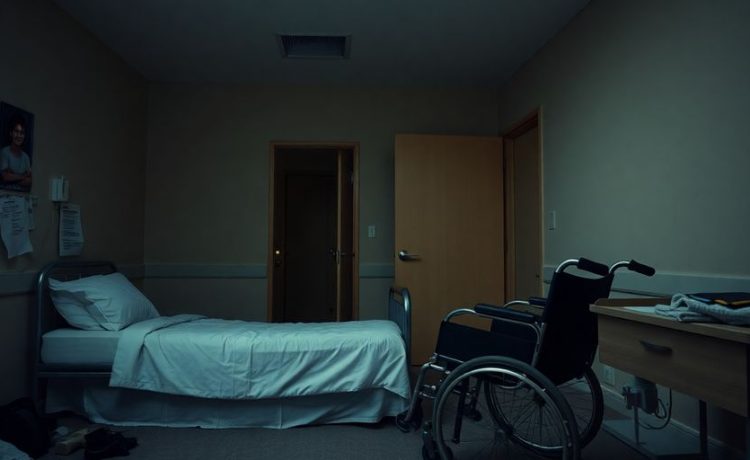Definition and Scope
Physical abuse in nursing homes isn’t just about obvious acts like hitting or kicking. It covers any intentional act or failure to act that causes harm or poses a risk of harm to an elderly person. This can include actions like shoving, slapping, or pinching, but it also extends to less visible forms of abuse. For instance, using restraints improperly or giving unnecessary medications to sedate residents are also forms of physical abuse. Understanding the full scope of physical abuse is crucial for recognizing and preventing it.
Common Misconceptions
There are several misconceptions about physical abuse in nursing homes. One common belief is that abuse is always visible or that it only involves physical acts. However, abuse can often be subtle and leave no immediate marks. Another misconception is that abuse only occurs when there is intent to harm. In reality, neglect or improper care due to understaffing can also lead to physical harm. Recognizing these misconceptions is essential for addressing the problem effectively.
Legal Definitions
Legally, physical abuse in nursing homes is defined by both federal and state regulations. These laws outline what constitutes abuse and the responsibilities of nursing homes to protect residents. It includes any action that results in physical harm or pain, whether intentional or due to negligence. Legal definitions also cover the use of restraints and medication, ensuring that these are only used appropriately and not as a form of control or punishment. Understanding these legal frameworks helps in identifying and reporting abuse accurately.
How Common Is Physical Abuse in Nursing Homes?
Statistical Overview
Physical abuse in nursing homes is a significant concern, with studies indicating that a large number of elderly residents experience some form of abuse. A staggering two out of three nursing home staff members have admitted to engaging in abusive behavior towards residents over the past year. This statistic is alarming and highlights the prevalence of such incidents in care facilities. Furthermore, it’s estimated that millions of elders face abuse annually, yet many cases remain unreported, leaving the true extent of the problem unknown.
Factors Contributing to Prevalence
Several factors contribute to the prevalence of physical abuse in nursing homes. One major issue is understaffing, which leads to overworked caregivers who may lack the patience and resources necessary to provide proper care. Additionally, insufficient training can result in staff members being ill-equipped to handle challenging situations, increasing the likelihood of abusive behavior. Institutional culture also plays a role, as environments that do not prioritize resident safety can inadvertently foster conditions where abuse occurs.
Comparative Analysis with Other Forms of Abuse
When compared to other types of elder abuse, physical abuse is just one part of a broader issue. Elder abuse can take many forms, including emotional, financial, and sexual abuse, each with its own set of challenges and impacts. While physical abuse involves the intentional use of force that can cause harm, neglect and emotional abuse are the most commonly reported types, affecting a significant portion of nursing home residents. In fact, between 10-20% of residents suffer from some form of abuse, with neglect and emotional abuse being the most frequent. Understanding these dynamics is crucial for addressing the comprehensive needs of elderly individuals in care facilities.
Identifying Signs of Physical Abuse in Nursing Homes
Physical Indicators
Physical abuse in nursing homes can sometimes go unnoticed because the signs aren’t always clear. However, there are several physical indicators that could suggest abuse. Unexplained bruises, abrasions, or welts are common signs. More severe indicators include fractures, sprains, or even internal injuries. In some cases, residents may have marks that resemble the use of restraints, such as rope marks on the wrists or ankles. Other signs might include burns, bite marks, or evidence of untreated wounds. Additionally, broken eyeglasses or frames can be a subtle indicator of a struggle or fall, and should not be overlooked.
Behavioral Changes
Aside from physical signs, changes in behavior can also signal abuse. A resident who suddenly becomes withdrawn, anxious, or fearful may be experiencing abuse. They might be reluctant to speak in the presence of certain staff members or other residents. Sometimes, they may exhibit signs of depression or anxiety that were not previously present. It’s important to note these changes, as they might indicate that the resident is trying to cope with a traumatic experience.
Unreported Cases
Unfortunately, many cases of physical abuse in nursing homes go unreported. The reasons for this are varied; residents may feel ashamed, fearful of retaliation, or simply unable to communicate what is happening. In some instances, they might not even realize that what they’re experiencing is abuse. Families and caregivers should remain vigilant and attentive to any signs of distress or discomfort in their loved ones. Regular visits and open communication can help in identifying potential abuse early. If you suspect abuse, it’s crucial to recognize these signs and take appropriate action to protect vulnerable individuals.
Impact of Physical Abuse on Elderly Residents
Physical Consequences
Physical abuse in nursing homes can lead to a variety of severe physical consequences for elderly residents. Injuries such as bruises, fractures, and head trauma are common, often resulting from violent actions like hitting or pushing. These injuries can lead to prolonged hospital stays and a significant decline in an individual’s overall health. Furthermore, the elderly are particularly vulnerable to complications from injuries, which can exacerbate existing health issues or lead to new ones. The physical toll can be devastating, often resulting in a reduced quality of life and, in severe cases, increased mortality rates.
Psychological Effects
The psychological impact of physical abuse on elderly residents is profound. Victims often experience feelings of fear, anxiety, and depression, which can be as debilitating as the physical injuries themselves. The constant threat of harm can lead to a state of chronic stress, affecting mental health and cognitive functioning. Many elderly individuals may also suffer from a loss of trust in caregivers and a sense of isolation, as they may feel unable to communicate their experiences to others. This emotional turmoil can lead to long-term psychological issues, making recovery a challenging process.
Long-term Health Implications
The long-term health implications of physical abuse in nursing homes extend beyond immediate physical and psychological effects. Chronic pain, mobility issues, and the worsening of pre-existing conditions are common long-term consequences. Additionally, the stress and trauma associated with abuse can lead to a decline in cognitive abilities, further impacting the resident’s independence and quality of life. Over time, these health issues can lead to increased dependency on medical care and support services, placing an additional burden on healthcare systems and families. Addressing nursing home abuse is crucial to prevent these long-term consequences and ensure the safety and well-being of elderly residents.
Perpetrators of Physical Abuse in Nursing Homes
Staff Members
Staff members are often the main perpetrators when it comes to physical abuse in nursing homes. These individuals are in close contact with residents daily, providing them with ample opportunity to commit acts of abuse. Unfortunately, the pressures of understaffing and lack of proper training can lead some staff to resort to abusive behaviors. When overwhelmed, these caregivers might express their frustration through harmful actions toward residents. It’s reported that a significant portion of staff have admitted to some form of abuse or neglect. This highlights the urgent need for better training and support systems within these facilities.
Other Residents
In some cases, other residents can also be the source of abuse. Conflicts between residents are not uncommon, particularly in environments where individuals may have cognitive impairments or difficulty communicating effectively. Such conflicts can escalate into physical altercations, causing harm. Nursing homes must implement strategies to monitor interactions and mediate disputes to prevent these situations from occurring.
External Visitors
Though less common, external visitors, such as family members or friends, can also be perpetrators of abuse. These individuals may take advantage of their access to residents, using it as an opportunity to exert control or inflict harm. It’s crucial for nursing homes to have policies in place to monitor and restrict visitor access when necessary, ensuring the safety and well-being of all residents.
Causes of Physical Abuse in Nursing Homes
Understaffing and Overwork
One major cause of physical abuse in nursing homes is understaffing and overwork. When facilities don’t have enough staff, the existing employees often find themselves overwhelmed. This can lead to frustration and a lack of patience, which might result in abusive behavior. Staff members might not have the time to handle situations calmly, and this can unfortunately lead to physical abuse. Nursing homes are responsible for ensuring they have enough staff to provide proper care and reduce the risk of abuse.
Lack of Training
Another significant factor is the lack of training among caregivers. Without proper training, staff may not know how to handle challenging situations without resorting to physical force. Training programs should focus on teaching staff effective communication skills and non-violent conflict resolution techniques. This can help prevent situations from escalating to the point of physical abuse.
Institutional Culture
The culture within the institution itself can also contribute to physical abuse. If a nursing home has a culture that tolerates or turns a blind eye to abusive behavior, it can create an environment where such actions are more likely to occur. It’s crucial for nursing homes to foster a culture of respect and dignity for all residents, ensuring that abuse is not tolerated under any circumstances.
In summary, addressing these causes requires a comprehensive approach, including increasing staffing levels, improving training programs, and promoting a positive institutional culture. By tackling these issues, the prevalence of physical abuse in nursing homes can be significantly reduced.
Preventive Measures Against Physical Abuse
Staff Training Programs
One of the most effective ways to prevent physical abuse in nursing homes is through comprehensive staff training programs. These programs should focus on educating caregivers about the importance of empathy and patience when dealing with residents. Proper training equips staff with the necessary skills to handle difficult situations calmly and effectively. Training should cover recognizing signs of abuse and understanding the legal obligations to report any incidents. Regular refresher courses can help maintain a high standard of care and keep staff updated on best practices.
Resident Monitoring Systems
Implementing robust resident monitoring systems is another crucial step in preventing abuse. These systems can include surveillance cameras in common areas, regular check-ins by supervisory staff, and the use of technology to monitor resident well-being. Monitoring not only acts as a deterrent to potential abusers but also helps in quickly identifying any incidents of abuse. It is essential to balance privacy concerns with the need for safety, ensuring that monitoring is done ethically and transparently.
Policy and Regulation
Strong policies and regulations are vital in safeguarding residents from physical abuse. Nursing homes should have clear protocols for reporting and dealing with abuse allegations. Regular audits and inspections by external bodies can ensure compliance with these protocols. Additionally, establishing a zero-tolerance policy for abuse can create a culture of safety and respect within the facility. Encouraging open communication between residents, families, and staff can also help in identifying and addressing issues before they escalate.
Legal Recourse for Victims of Physical Abuse
Reporting Procedures
When physical abuse in a nursing home is suspected, it’s vital to take immediate action. Victims and their families have several options to report abuse. First, they can file a complaint directly with the nursing home administration. It’s often helpful to document any evidence of abuse, such as photographs of injuries or written accounts of incidents. Additionally, contacting local law enforcement is a crucial step, as it can lead to a formal investigation. Another important resource is Adult Protective Services, which can provide support and ensure the safety of the elder.
Legal Rights of Residents
Residents of nursing homes and assisted living facilities have the right to protection from abuse and neglect. This right is enshrined in federal and state laws designed to safeguard the elderly. Facilities are required to provide a safe environment and are held accountable if they fail to do so. Residents or their families can also contact a lawyer to explore further legal options. Legal counsel can help navigate the complexities of the law and ensure that the victim’s rights are upheld.
Compensation and Settlements
In cases where abuse has been proven, victims may be entitled to compensation. This can cover medical expenses, pain and suffering, and other damages. The process typically involves filing a lawsuit against the nursing home or the individual perpetrator. It’s advisable to seek the guidance of an experienced attorney who specializes in nursing home abuse cases. They can provide valuable insight into the legal process and help secure a fair settlement for the victim. For those seeking justice, understanding the key elements involved in filing a nursing home abuse lawsuit is essential. Explore the key elements involved in filing a nursing home abuse lawsuit and discover how to pursue justice for affected loved ones.
Role of Families in Preventing Physical Abuse
Recognizing Warning Signs
Families play a crucial role in identifying and preventing physical abuse in nursing homes. Being vigilant about any changes in a loved one’s physical appearance or behavior is essential. This vigilance includes looking for unexplained bruises, cuts, or other injuries. Families should also pay attention to any changes in the resident’s mood or behavior, such as increased anxiety, depression, or withdrawal.
Advocacy and Support
Family members should act as advocates for their loved ones by maintaining open communication with nursing home staff and administration. This involves attending care meetings, asking questions about the resident’s well-being, and voicing any concerns. Advocacy also means supporting the resident emotionally, ensuring they feel comfortable discussing any issues they might face.
Communication with Care Facilities
Regular communication with care facilities is vital. Families should establish a rapport with caregivers and staff to ensure they are informed about the resident’s daily care and any incidents that may occur. This communication helps in staying connected with elderly loved ones and ensuring their safety.
Families can also take practical steps to prevent abuse by:
- Making unannounced visits to observe the care provided.
- Keeping detailed records of any concerns or incidents.
- Engaging with other families to share experiences and strategies for safeguarding their loved ones.
By preventing neglect in nursing homes, families not only protect their loved ones but also contribute to creating a safer environment for all residents.
Challenges in Addressing Physical Abuse in Nursing Homes
Underreporting Issues
Physical abuse in nursing homes often goes unreported, making it difficult to gauge the true extent of the problem. Many residents fear retaliation, which can prevent them from speaking up. Additionally, cognitive impairments or communication difficulties can hinder residents’ ability to report abuse. Families and staff might overlook subtle signs, assuming they are part of the aging process. This lack of reporting means that many cases remain hidden, allowing abuse to continue unchecked.
Fear of Retaliation
Fear is a powerful deterrent for residents who might otherwise report abuse. They may worry about worsening treatment or being isolated from social activities. This fear is not unfounded, as some abusers may threaten further harm or manipulation to maintain control. Creating a safe environment where residents feel secure to report abuse is crucial but challenging.
Resource Limitations
Nursing homes often face significant resource limitations, impacting their ability to address abuse effectively. Staffing shortages mean fewer eyes to monitor interactions and less time to build trusting relationships with residents. Limited funding can also restrict training opportunities for staff, leaving them ill-equipped to handle abusive situations appropriately. These limitations can lead to environments where abuse can occur more easily and remain undetected. Addressing these resource constraints is essential to improving the safety and well-being of nursing home residents.
For more insights on how authorities are tackling these issues, you can explore the collaborative efforts between the Office of Inspector General and the Department of Justice.
Future Trends in Combating Physical Abuse
Technological Innovations
In the fight against physical abuse in nursing homes, technology is stepping up as a powerful ally. Advanced monitoring systems are becoming more common, offering real-time alerts to staff and families when unusual activities are detected. These systems include smart cameras and motion sensors that can track resident movements, ensuring quick response to potential incidents. Another tech advancement is wearable devices that monitor vital signs and physical activity, which can indicate distress or unusual patterns. These tools not only help in identifying abuse but also in addressing physical abuse by providing data that can be used in investigations.
Policy Developments
On the policy front, governments and organizations are pushing for stricter regulations and better enforcement of existing laws. New policies focus on mandatory reporting of abuse cases, ensuring that all incidents are documented and reviewed. This is part of a broader move towards a zero-tolerance approach, which aims to create a culture where abuse is not tolerated. Such policies also advocate for regular audits and checks within nursing homes to maintain transparency and accountability. As these measures take hold, they signal a commitment to creating a safer environment for residents.
Community Involvement
Community involvement is gaining traction as a crucial component in combating abuse. Families are now encouraged to be more involved in the care of their loved ones, with open lines of communication between them and care facilities. Community programs are being developed to educate the public on recognizing signs of abuse and understanding the importance of reporting any suspicions. Volunteers and advocacy groups are also playing a significant role by visiting nursing homes and offering support to residents. This collective effort not only helps in preventing abuse but also in fostering a supportive environment for those affected.
Further Resources
Weitz and Luxenberg Law Offices







